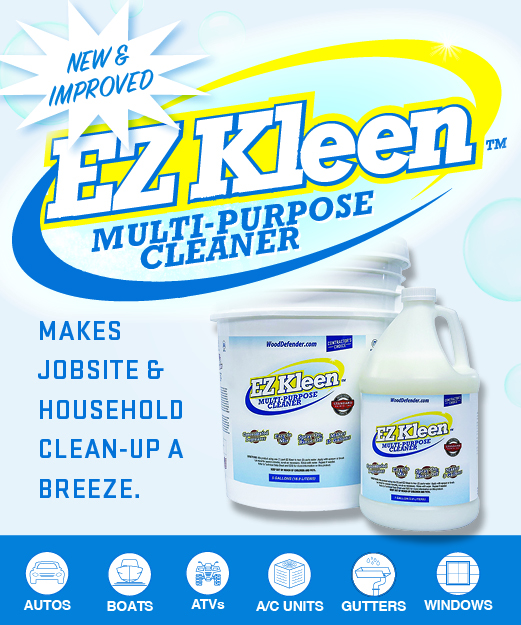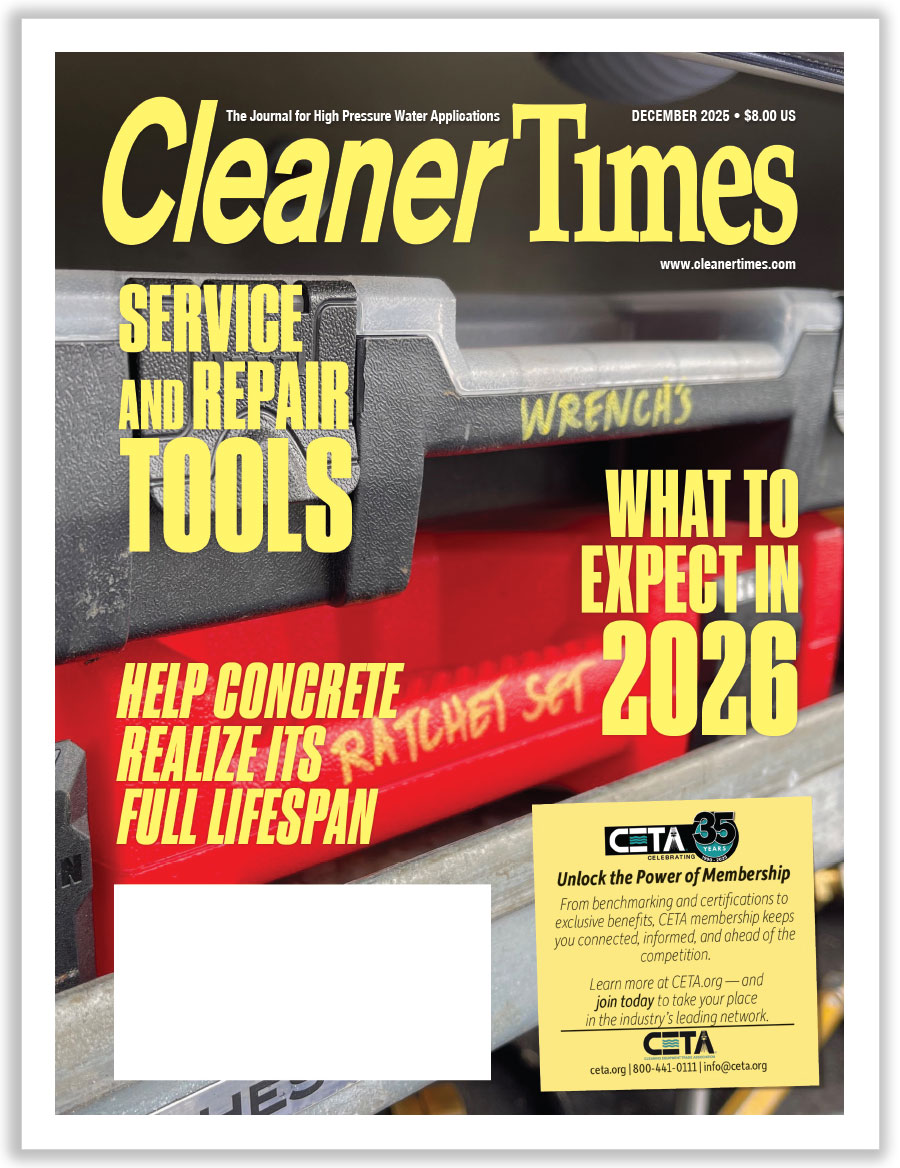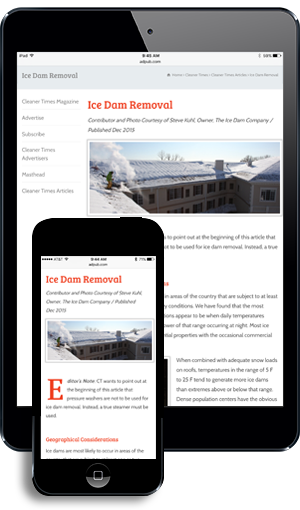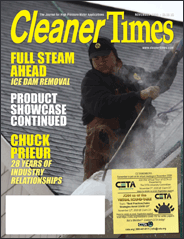
Fleet Washing Techniques
by Diane M. Calabrese | Published July 2025
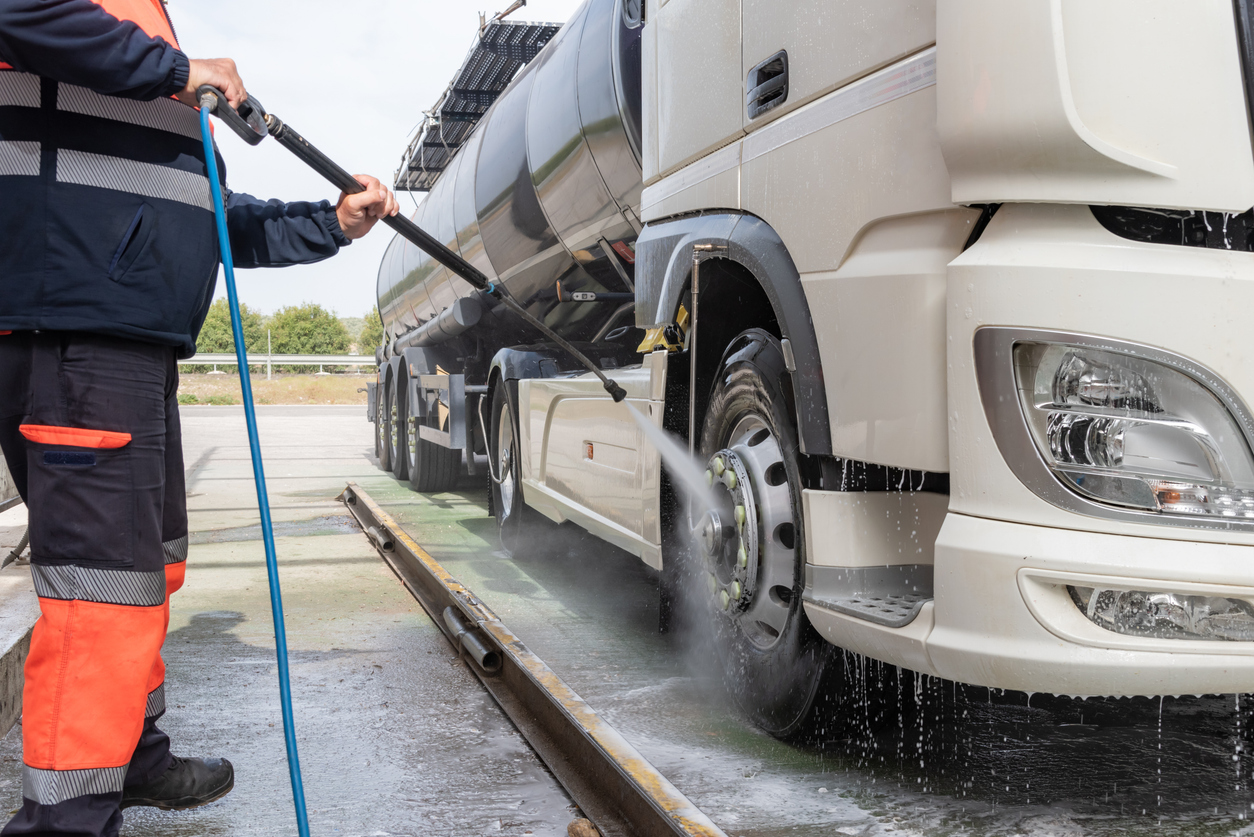
Do good things come in threes? In the case of the equilateral triangle, they do – three equal sides and three equal angles, a utilitarian building block.
On a more practical level, our thrice-good here comes in the form of three industry members, each with a deep knowledge of fleet washing techniques. Each one of them has a great deal to tell us.
Since we started by writing about same-size sides and angles, let’s begin with the colloquial ‘size’ as it relates to any activity. “There is no one-size-fits-all method for fleet washing scenarios,” says Michael Hinderliter, president of Steamaway, Inc. in Fort Worth, TX.
Nevertheless, explains Hinderliter, there’s a “common misconception” there is one-way to proceed. That’s not so.
“Knowing how to single step with either high or low pressure and two-step can make the difference in the quality of the wash job and the time spent doing it,” says Hinderliter. “Many of the newcomers are put off by having to use a brush and perform some elbow grease, but this technique can yield significant savings in certain situations.”
Obviously, the goal is to get a good outcome in the most expeditious way possible. Sometimes that means a bit of manual effort.
“Doing more with less – energy, chemicals, water – is an overarching goal in our industry,” says Hinderliter. “One example of a recently introduced fleet-washing technique that contributes to this goal is the use of newly designed downstream injectors that allow for draw at higher pressures around 1500 psi.”
The injectors get positive marks from Hinderliter for two reasons: They reduce chemical costs and the use of wash water. Moreover, less water used to wash means less water to recover.
And there’s another big benefit that comes with downstream injectors. “[More] highly concentrated blends are available that can be used at much higher ratios, resulting in cost reduction,” says Hinderliter. But he cautions that “it is important to handle these aggressive detergents properly to prevent harm to the end user and property.”
The wash itself is just one dimension of fleet washing. “The management of fleet washing logistics is just as important as the actual cleaning process when it comes to conserving energy, chemicals and water,” says Hinderliter. “Logistics is a huge factor and is oven overlooked,” explains Hinderliter.
How so? “When servicing multiple locations in a single shift, it can be challenging to optimize the route, especially when customers have specific time windows for service,” says Hinderliter.
Organization is key. “Properly mapping out and visualizing the route can make the difference between excessive drive time and being able to complete one or two additional jobs in a day,” says Hinderliter.
To get the optimal outcome with fleet washing, all the components of the task – including logistics – must be completed optimally. That means no mistakes that are easily avoided.
“A common mistake in fleet washing that can be easily averted with a change [is] improper rinse technique,” says Hinderliter. “Proper rinse technique can make a big difference in the end results.”
And Hinderliter gives us an illustration of how the technique used in rinsing will lead to the best possible result. “[It] is important to put some thought into how the water will flow as you spray the pressure washer.”
Indeed, in the context of rinse technique, Hinderliter has a strong recommendation about what works best. “The side-to-side method, which I have taught for many years and rarely hear anyone talk about, is far superior to a top-down method.”
With traffic congestion to the extent of gridlock in many localities, mobile fleet wash service, such as Hinderliter’s company provides, makes running a business just a bit easier for a fleet owner/operator. The region where the company is located helps inform its configuration.
Thus, a central fleet-washing facility to which fleet owners routinely bring their vehicles may be the best fit. Or not. It may be mobile or a combination of mobile and fixed.
Hinderliter and others who tackle fleet washing remain committed to best practices. And that means seeking out and incorporating (often developing) improved methods and tools on a continuous basis.
On the Move, Prudently
Logistics matter. Although cleaning methods and equipment might be the top consideration, any company with a mobile washing component must give careful consideration to routes and communication.
“Every mile you drive without your equipment actively cleaning is a mile where you’re spending money but not earning it,” says Adam Backstrom, national account specialist at BioClean Systems in Minneapolis, MN. “Fuel costs add up, and your crew’s time in transit costs money.”
And while costs are being incurred by a less-than-rigorous approach to queuing up jobs, the closest next job could be missed. “[There] could be perfectly good jobs just around the corner – maybe several of them – that you’re overlooking” says Backstrom.
As it happens, Backstrom has a strong suggestion about how to move prudently from one job to the next. “Avoid star patterns for route layouts unless absolutely necessary and charged accordingly.
“Remember, your crew’s time spent driving without actively working – spraying water – doesn’t generate revenue,” continues Backstrom. “Effective route planning is arguably the single most critical factor in optimizing your business’s profitability.”
The fundamentals of cleaning must be firmly in place no matter where mobile wash teams are coursing or stationary team members are working. They include the best products.
“High-quality products, while initially more expensive, ultimately save both labor and water, yielding significant long-term benefits,” says Backstrom. “Access to these superior products, once limited to reliance on local suppliers, has greatly improved with the ease of shipping, making them readily available.”
Backstrom’s company offers a two-step system. And he advocates for a two-step washing process.
“For optimal time and labor savings, I highly recommend utilizing a two-step washing process whenever the situation allows,” says Backstrom. “While not universally applicable, this technique, especially when paired with high-quality detergents, can significantly reduce operational costs and improve efficiency in washing fleets.”
Backstrom says that his company receives very positive feedback from the fleet-washing firms that use its two-stem wash process. He explains that the development of the cleaning process offered by his company has 50 years of experience built into it.
The basics of the system from Backstrom’s company include a gun it engineered, a 125-ft. hose, specially formulated detergents, which are ready for quick chemical changes and geared to cleaning in an eco-friendly way. The system works with existing five gpm or eight gpm wash pumps or can be matched with a custom mobile wash unit.
The operators of systems from Backstrom’s company have exclusive territories. They receive training and support directly from the company. There are no distributors. Safety gear, two-gun hose combinations and more are part of the startup package. Support is ongoing.
Square Away
Four equilateral triangles can be arranged to form a square – lots of symmetry there, and also evocative of what every business owner wants: balance.
So, have we squared away everything? Not quite.
Some of our readers may have considered adding fleet washing to their repertoire of services. And they remain in the ‘thinking about’ it stage.
A primer can help. Chad Reiffer, the distribution program manager at Hydro-Chem Systems in Caledonia, gives us a concise one. (Reiffer is also a member of the executive board of directors at CETA, the Cleaning Equipment Trade Association.)
“Fleet washing techniques can be separated by two different branches with separate subcategories,” explains Reiffer. There is manual fleet washing, which is performed by individuals using pressure washers, and there is automated fleet washing.
Manual fleet washing has seen great advances. “Recent techniques, such as utilizing higher pressure soap injection as well as wash accessories that allow the washer to switch between detergents – or turn them on [and] off, without walking back-and-forth from the equipment helps conserve time, energy, and chemicals.”
Helping fleet washers (and others in our industry) do more with less is an ongoing commitment from manufacturers, suppliers and distributors. Very often, it is improvements, more than something novel, that makes it possible.
“Two-step guns, remote systems, smart boxes, injector bypass setups, wash bay systems, etcetera are not new inventions, but continued improvement to the designs, components and affordability of these systems continues to help fleet washers do more with less,” explains Reiffer. Driving the investment in automated systems are “flexibility in washing frequency, as well as conservation of time, labor and long-term costs.”
Better cleaning results coupled with conservation of resources define the continuous improvement going on in the fleet washing sector. That continuous improvement encompasses touchless cleaning, detergent chemistry, water reclamation and reduced maintenance, explains Reiffer.
Mobile or stationary? That’s a question fleet-washing company must answer. (Perhaps it will be both.) The answer will inform other decisions.
While members of our industry are evaluating whether to add fleet-washing services, fleet owner/operators are evaluating their own needs. Understand what the owner of the fleet is considering.
The fleet owner/operator has expectations that are built on the type of fleet, and the need for compliance, explains Reiffer. The owner/operator will have “environmental, lease requirements, warranties, DOT inspections, sanitizing, washouts, etcetera, as well as budget and expenses” to consider, says Reiffer. A successful fleet washer understands the needs of the fleet owner/operator.
The owner/operator determines “whether it is most appropriate to perform the fleet washing operations in-house, hire a contract cleaner, or pay for as-needed ‘commercial washes’ at a retail wash location,” says Reiffer. Meeting the fleet/owner operator at a point of mutual understanding is all part of the technique of being a successful fleet washer.
Part of the technique in fleet-washing is communicating with the fleet owner/operator to get the best results for all parties involved. “Performing regular washes will result in a more efficient and better outcome,” explains Reiffer.
The owner/operator is not the only beneficiary. “Irregular cleaning typically requires use of more chemicals, water, labor, and short-term and long-term costs,” says Reiffer. Thus, the contractor and the environment gain too.
As for appraising the washed vehicle, there are several clues to a contractor that the outcome is not what it should be, explains Reiffer. One is residue or film left on the vehicle.
“Ensure detergents are mixed properly and applied at the correct dilution,” says Reiffer. “When brushing or performing a touchless wash, equally clean all areas of the vehicle’s surface with detergent [and/or] pressure washer spray.”
Realize that some soiling may demand extra attention. “Heavy road film or bugs may require pre-treatment with additional detergent or a more concentrated solution,” explains Reiffer. “Film residue caused by asphalt, tar, adhesive, mineral residue, cement, lime, salt, etcetera may require specialty detergents or cleaning processes.
Chalky residue left behind after washing can be caused by detergent residue that was not rinsed properly or water spots.”
Finally, in the process of washing, keep the basics (that apply beyond vehicles) in view. Proper mixing and application of detergents to begin. Then, carry through methodically.
“Do not allow detergents to dry before they are rinsed,” says Reiffer. “Use caution if using harsh caustic or acidic detergents on delicate surfaces such as polished aluminum, glass, vinyl graphics, decals, etcetera.”
Beware of hot surfaces. Reiffer advises they be pre-wet to prevent detergents from ‘flashing’ the surface’. Avoid excessive pressure or getting too close to the surface. Pressure should be at 2000 psi maximum and applied 12 inches from the surface. And take care with the angle of application around vinyl wraps or decals if spraying, if brushing use a soft bristle brush.
Finally, good technique requires attention to specific conditions, says Reiffer. “[Be] sure to account for variables such as temperature, sunlight, wind, wash frequency, type of film, style of vehicle, and many others that contribute to your outcomes.”
Techniques may vary – adjusted as variables dictate. But the goal is constant: an excellent result.
Clean vehicles are an investment protected. They present a positive image to the public and regulators (e.g., DOT), one that signals the commitment the fleet owner has to the job its vehicles accomplish, as well as to the community and the environment.

